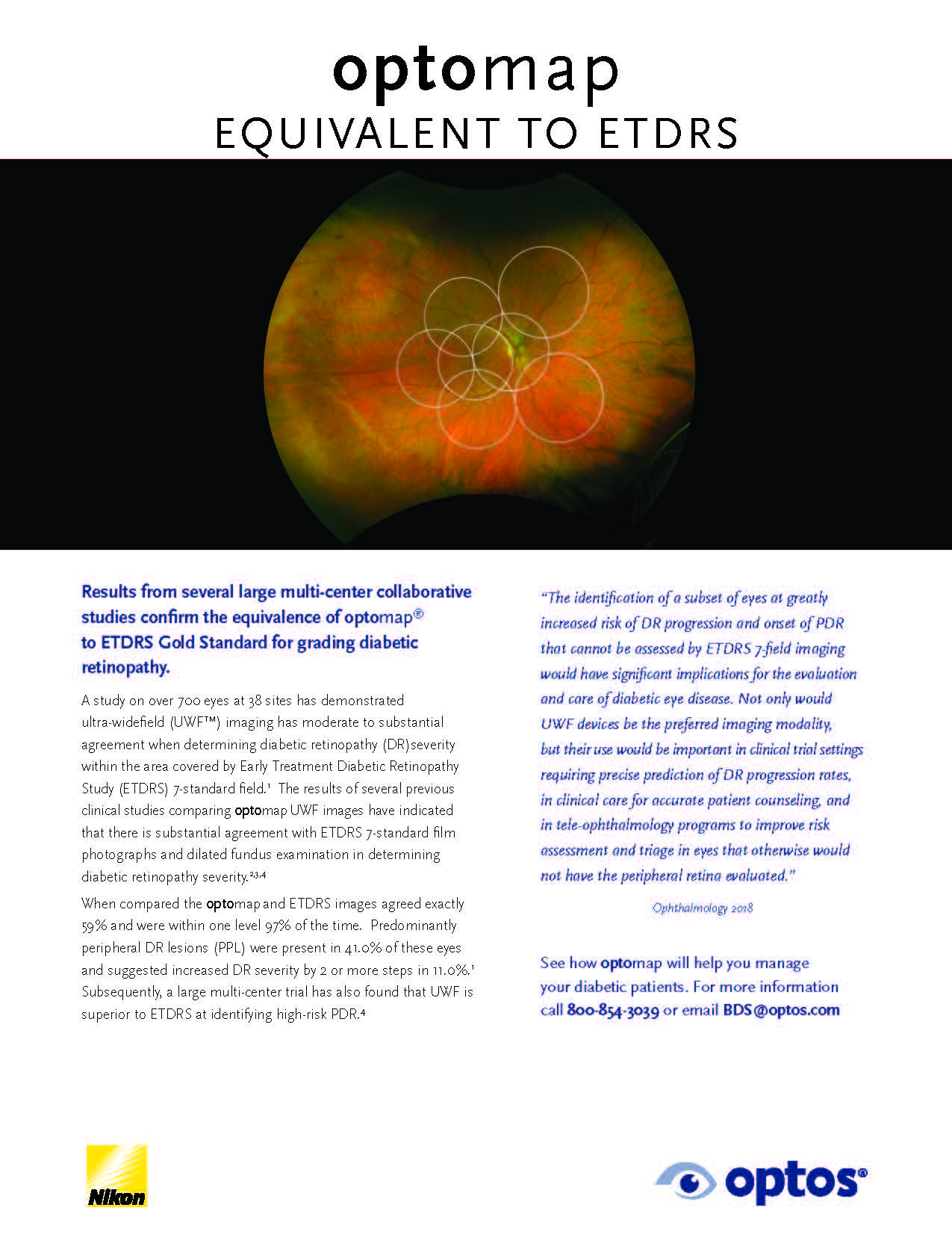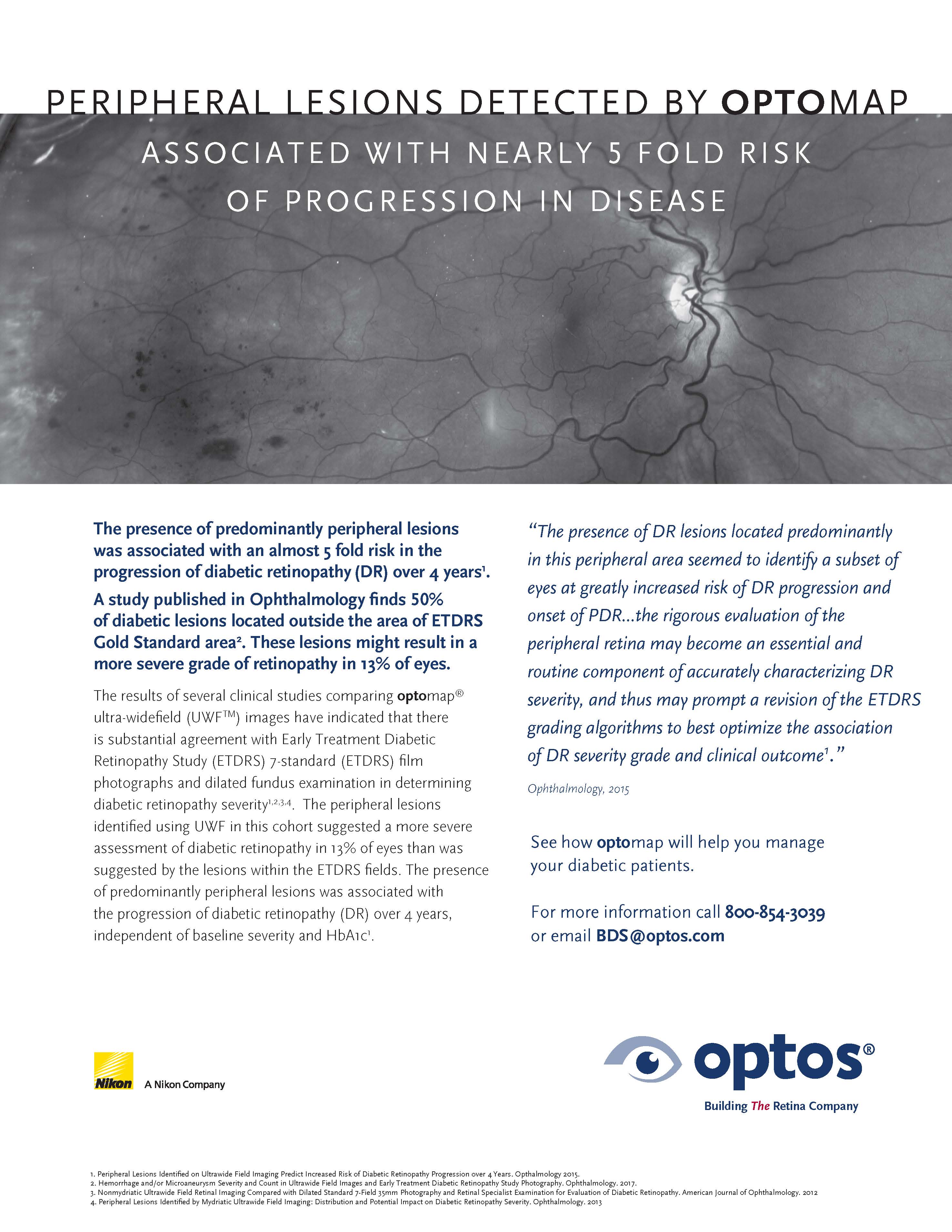Each year, November is recognized as November 14th is recognized as World Diabetes Day. The International Diabetes Federation (IDF) and the World Health Organization (WHO) created World Diabetes Day in 2011 in response to escalating health issues surrounding diabetes and diabetic eye diseases.
Diabetes and the Eye
Diabetic eye disease describes a group of eye conditions that include diabetic retinopathy (DR), glaucoma, diabetic macular edema and cataracts. DR is often reported as the most common form of diabetic eye disease. It is a serious complication of diabetes mellitus (DM), afflicting one third of all people with the disease, and it is in most countries, the leading cause of blindness among the working population. Everyone with diabetes is at risk of losing vision, but fortunately early diagnoses and timely treatment of diabetic retinopathy can prevent sight impairments and blindness.
Over 40% of patients diagnosed with diabetes eventually develop some level of diabetic retinopathy. Diabetic retinopathy is the leading cause of vision loss in working-age adults (20-65 years). Approximately one in three people with diabetes have diabetic retinopathy and one in ten will develop a vision threatening form of the disease. DR occurs as a direct result of chronic hyperglycemia (high glucose) causing damage to the tiny blood vessels of the retina, the light-sensitive tissue that lines the back of the eyes. In the less severe form of DR, blood vessels swell and leak small amounts of blood and fluid into the eye. Vision may be unaffected, giving no clue to the presence of disease. Untreated, this mild form of DR can progress leading to macular ischemia, in which capillaries in the macula close and cause blurred vision. More advanced DR causes macular edema, which results in the swelling of the macula leading to the potential of complete vision loss.
Managing diabetes goes a long way to managing diabetic retinopathy. Diabetes management includes controlling blood pressure, blood glucose and lipid levels. This can be achieved by encouraging a healthy lifestyle and medication as required. Improved control can slow the progression of eye disease, especially when initiated soon after diabetes is diagnosed.
Diabetic retinopathy may have no outward signs but can quickly progress to complete vision loss. Doctors will often recommend those with type 1 or 2 diabetes undergo a comprehensive eye exam once a year, or even more often if there are signs of DR.
optomap® imaging has been shown to improve management of diabetes in patients. optomap images capture a 200° view (about 82%) of the retina versus the 75° view provided by 7SF images. Studies have shown that this wider view can uncover evidence of disease that’s outside the narrow view of 7SF images. It can even change how doctors judge the severity of disease.
Evidence of disease at the periphery of the retina can also be a sign of future problems. One study found that patients with peripheral DR lesions were more than four times more likely to see their DR get worse as compared to patients without lesions.
Diabetic retinopathy can impact people of all ages and in cases of diabetic eye diseases and further complications, early detection is key. optomap can help doctors to better monitor and facilitate decision making regarding treatment. Visit our website to find a doctor in your area utilizing optomap or to learn more today.

